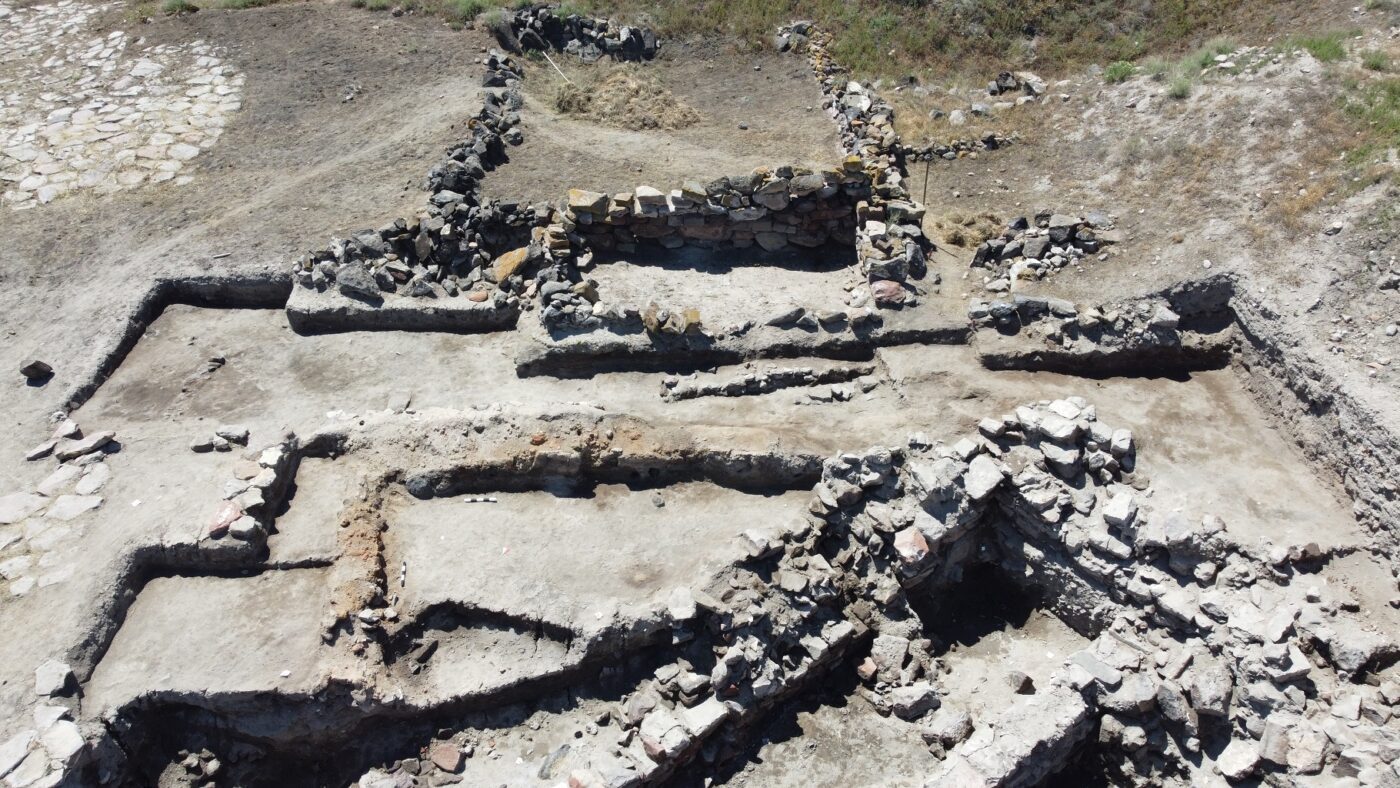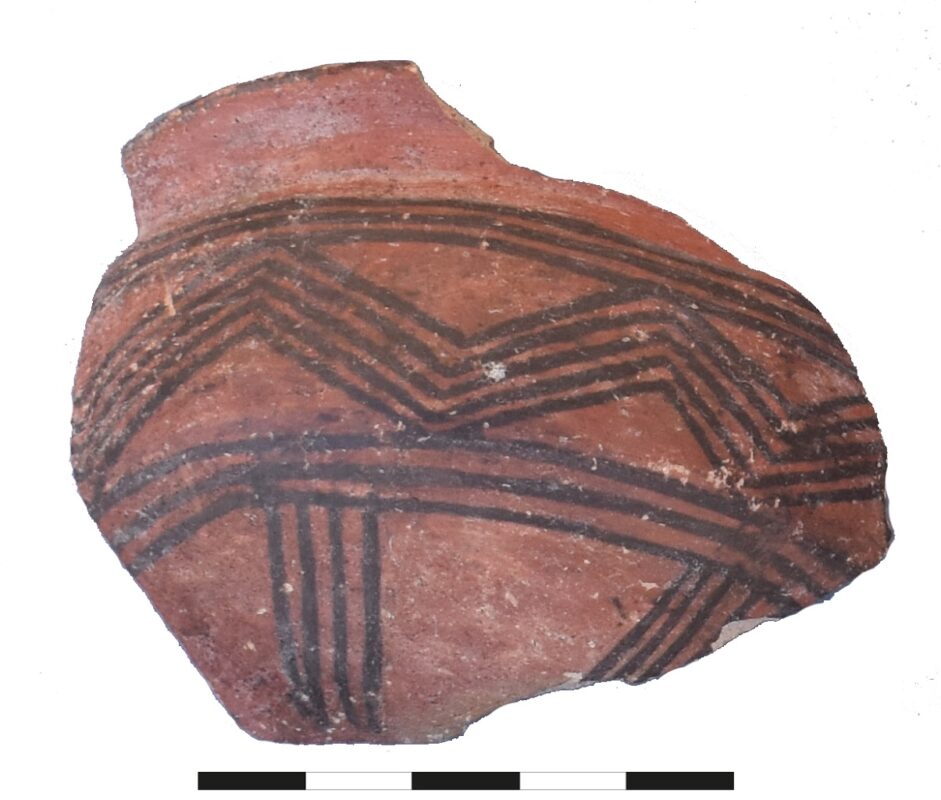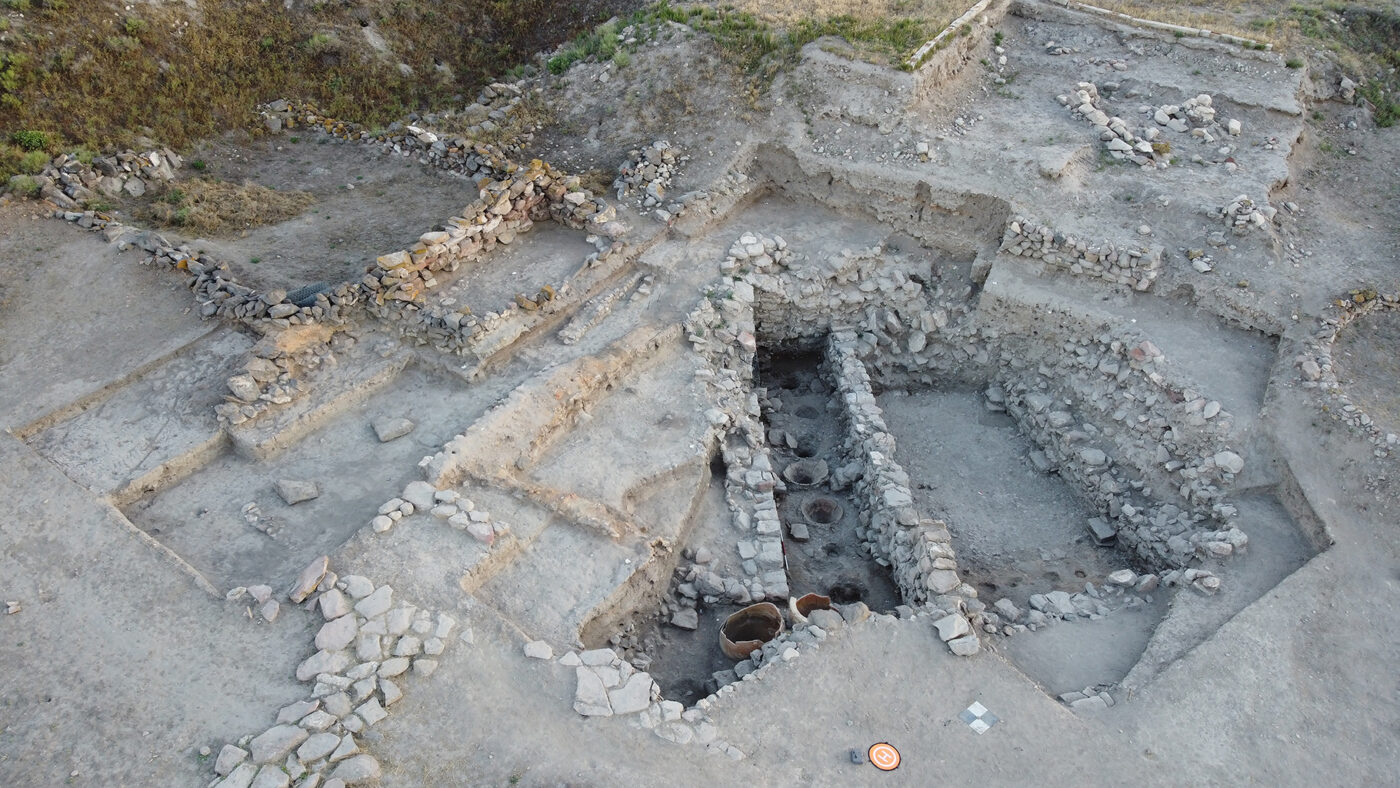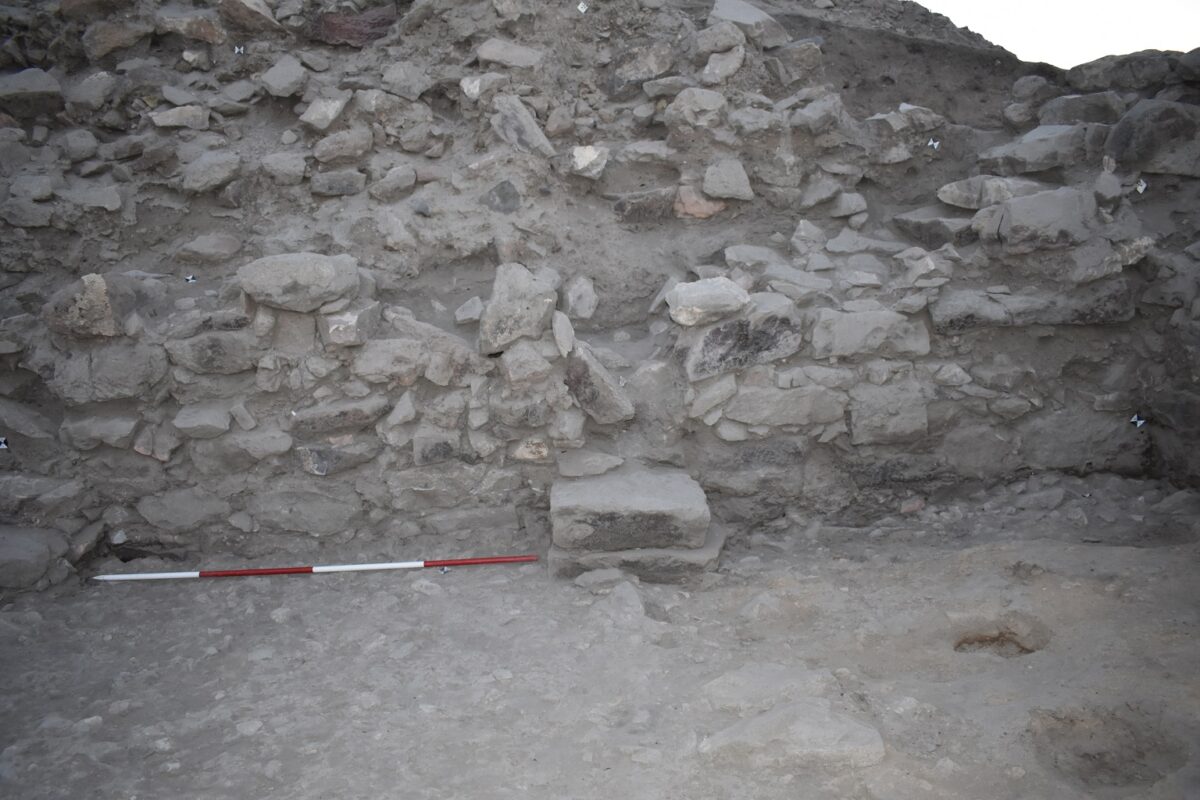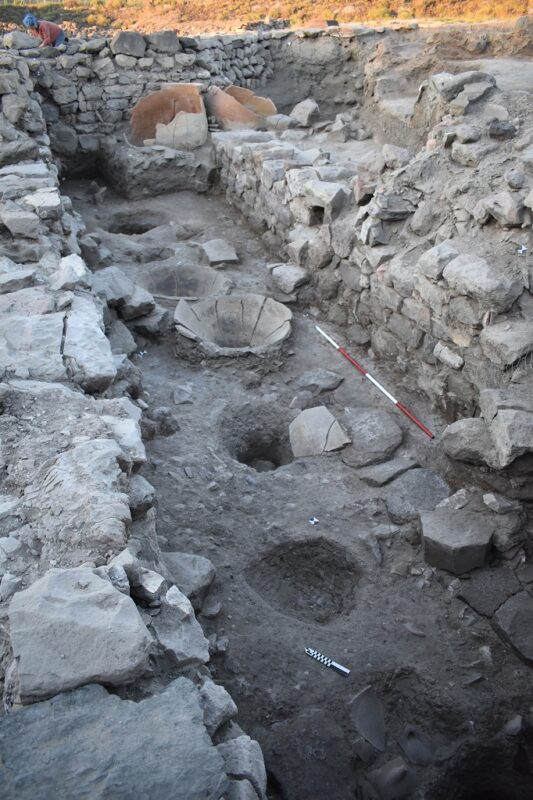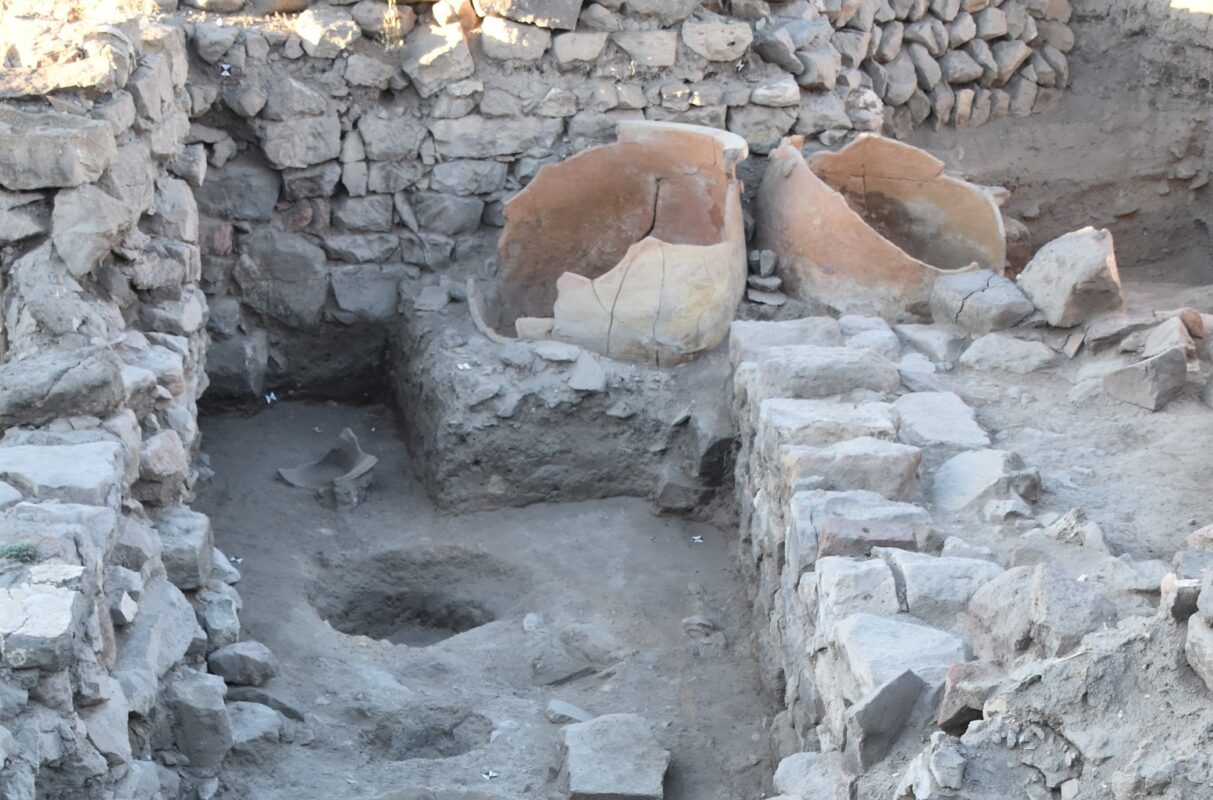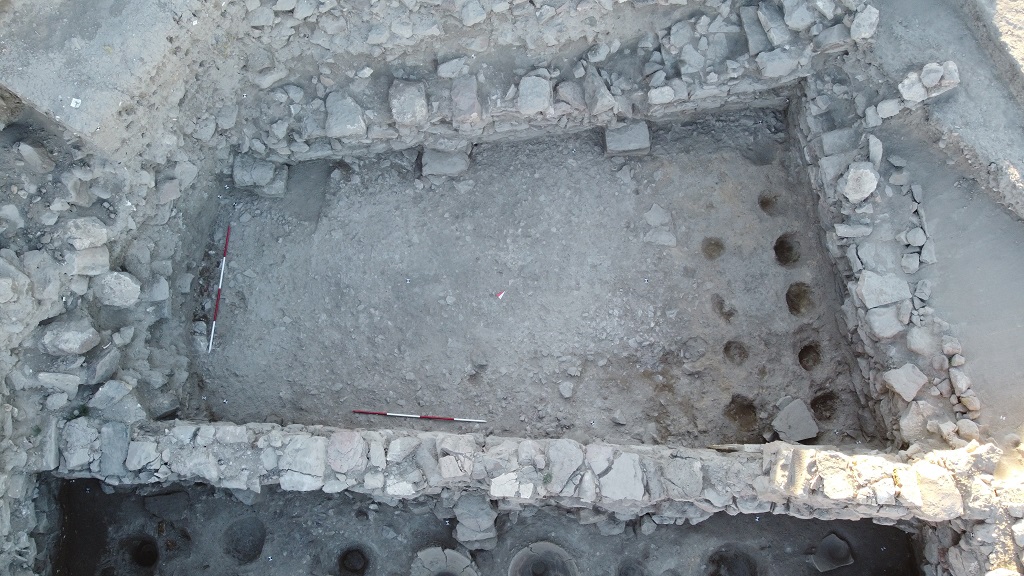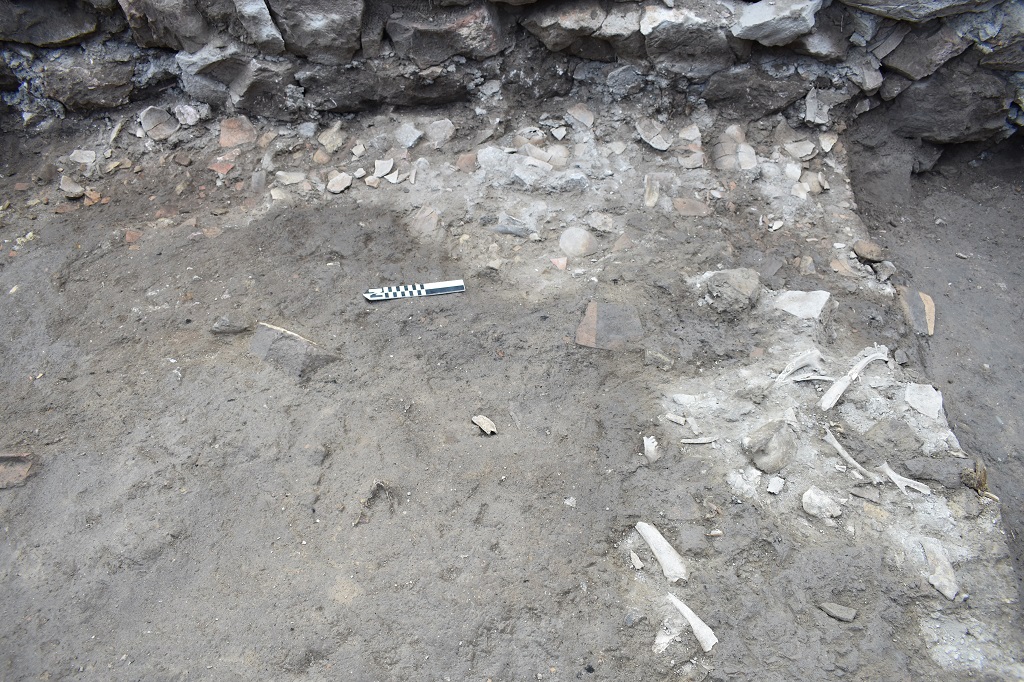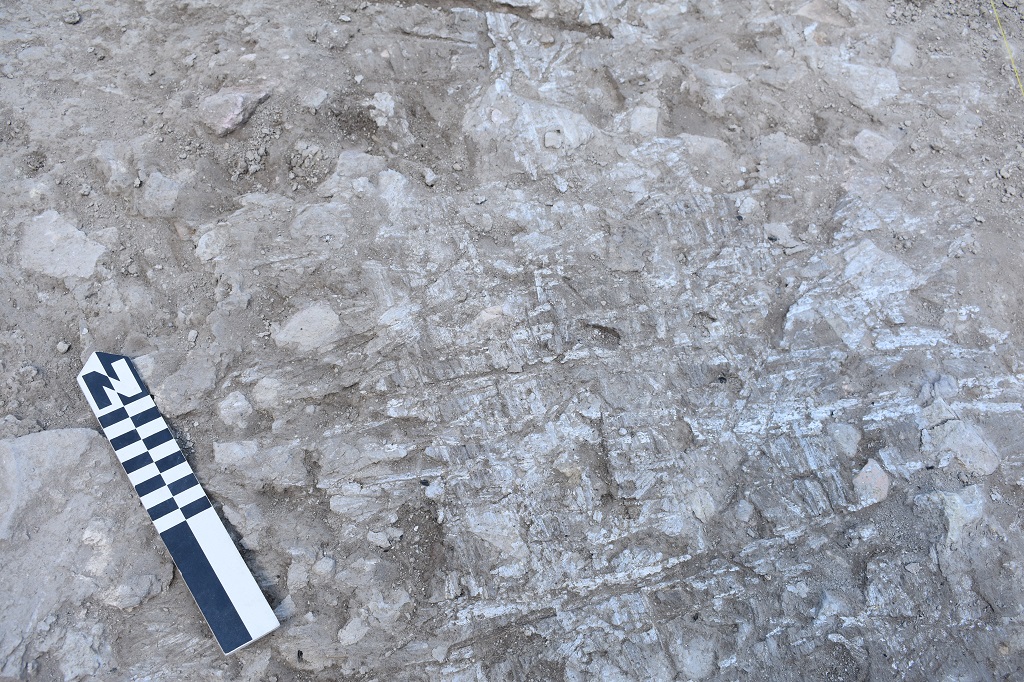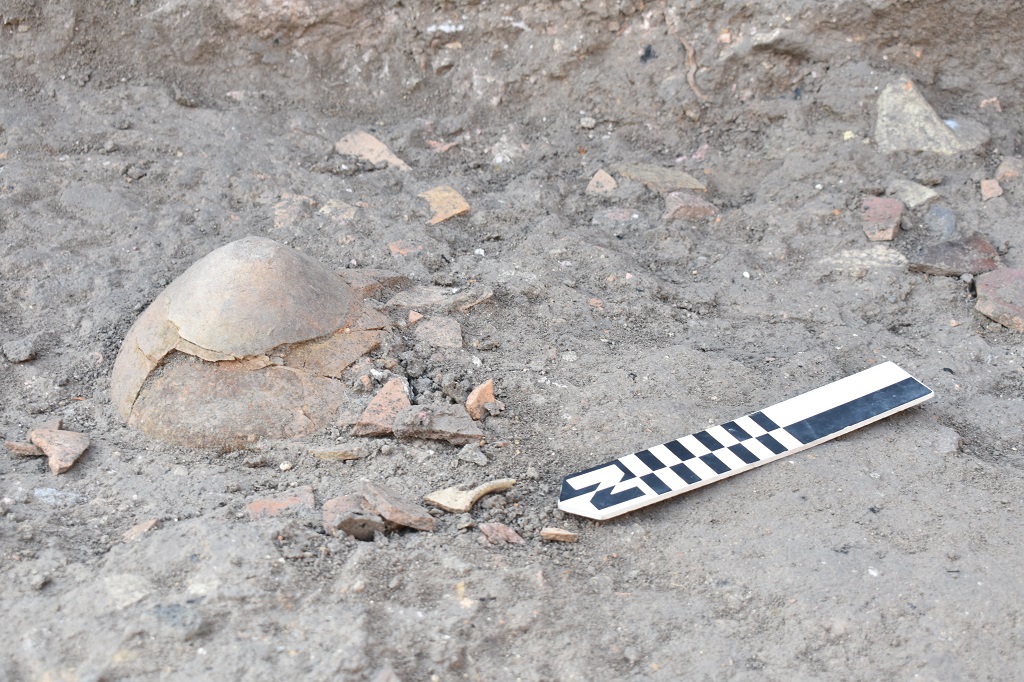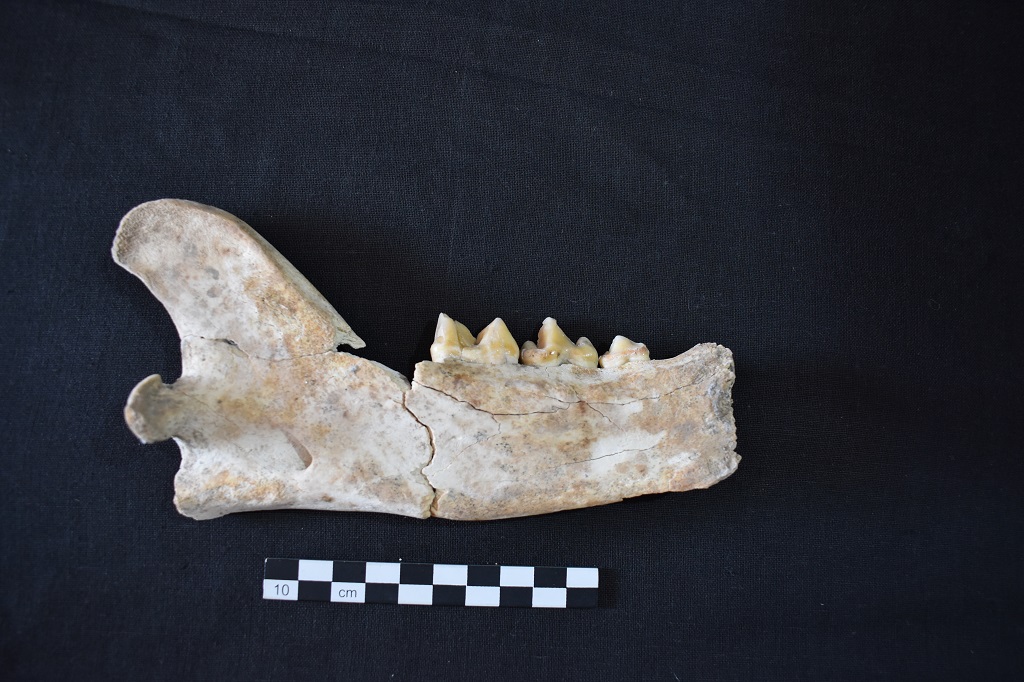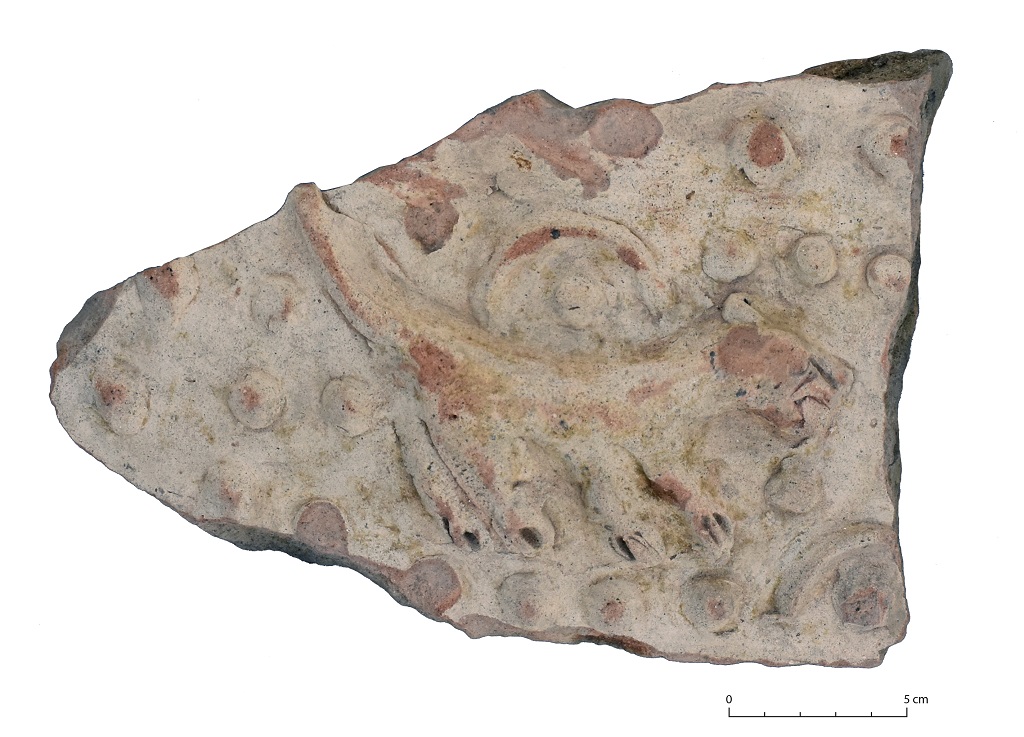Kültepe Mound
Excavations in the south-western sector of the site (Area 08)
In the last campaigns (2020-2022), research focused on the south-western sector of the site (Area 08), located in an area where Turkish excavations had identified a monumental complex of public buildings dated between the end of the 3rd and the beginning of the 2nd millennium BC, connected by a large stone-paved square. Excavations have uncovered a series of architectural structures related to the occupation of the 2nd millennium BC, divided into different stratigraphic phases dated to BM I-II (Kültepe Mound Periods 6-9).
The earliest documented phase, dated to the Middle Bronze I (Kültepe Mound Periods 8-9), corresponds to part of a large building (which we have named “The Burned Building”), of which only a limited portion has been identified thus far. This building has a similar orientation to the structures of the western wing of the so-called Southern Terrace Palace excavated by T. Özgüç and contemporary with the phase of the paved square.
The Burned Building is characterized by rectangular rooms with an east-west orientation and, in its oldest construction phase, is composed of a large room of approximately 5 m in length and up to 4 m in width north-south. The partitioning walls of the building show clear traces of fire, also evident on several mudbricks that have been burned and vitrified due to the high temperatures. Fragments of wooden beams that constituted the internal frame of the wall were also found completely charred. The building underwent several construction interventions and at least two refurbishing of the internal and external flooring. The internal deposits within the room and those relative to the fire and destruction of the structures excavated immediately outside, have yielded abundant materials, including several reconstructable vases and numerous fragmentary bronze artifacts (an axe and a pin). The ceramic material associated with the destruction levels lies within the Alishar III/II ceramic horizon (Middle Bronze I), characterized by painted vessels with overlapping geometric patterns and black or brown-red monochrome decorations applied to the external surfaces and rims of the vessels (jars, cups, beakers).
Along its northern limit the BM I building was partially removed to make room for the basement level of a monumental building belonging to the most recent architectural phase of the Middle Bronze II (Kültepe Mound Periods 6-7).
A monumental stone building from the Middle Bronze Age II (Area 01-08)
Immediately to the north of the Burned Building, a massive underground building dated to the Middle Bronze Age II (18th century BC) was uncovered. The structure, which we have named the “Stone Building”, consists of two adjacent semi-subterranean rooms, a narrow and long (L.78) room measuring 12 x 2.5 meters with a recess at the southeastern end, and a large rectangular room (L.79) measuring 12 x 5 meters. The stone walls were made of locally sourced volcanic rock with roughly squared faces on the inner sides, while the exterior body was directly adjacent to the ground. The western and northern walls, which had to bear the greatest load, are over 3 meters thick with a maximum height of almost 4 meters in the northwest corner. Access to the underground rooms took place through a staircase with stone steps located in the northeast corner and carved along the northern supporting wall. The building, with an east-west orientation, must have had at least one upper floor located at the level of the paved square, which was partially cut and adapted for the construction of the structure.
The two semi-subterranean rooms were very special warehouses: the southern room (L.78), narrow and elongated, was used for storing food goods in nine large pithoi set into the floor lined with compacted earth and large stone slabs; the northern room (L.79), large in size, was used as a storage place for tableware and storage vessels (including a large jar with applied decoration) placed both on wooden shelves, located along the northern and southern sides, and on a pisé benchwith ten compartments located along the eastern side of the room. The floor of the large room was made of small stones coated with plaster and covered with mats, as indicated by the mineralized traces which remained evident on the floor’s surface.
A large amount of pottery was recovered from the layers related to the collapse of the building, with types ranging from storage vessels to tableware in its red burnished variety, to more common everyday shapes. Some vessels were almost entirely preserved, while most of the material, including the large pithoi, was found in fragments beneath the substantial collapses of the stone walls. In addition, a surprising amount of animal bones was found in the collapse and filling levels, with a singularly high concentration of wild species.
The pottery assemblage is coherent and is attributable to a late phase of the Middle Bronze Age sequence, corresponding to levels 6 and 7 of the mound, and to levels Ia and Ib of the kārum, which may be dated to the 18th century BC also through comparisons with ceramic repertoires from sites in the plain and central Anatolia alike.
Of exceptional importance is the discovery of several fragments belonging to two large jars decorated with clay applications which make up geometric and figurative motifs which have no comparisons in Anatolia. Long friezes separated by strips alternate with metopes with circles, crosses and crescent designs, rosettes and stylized suns, festoons and stairs. Between them, one finds a scene with figurative motifs featuring a lioness, a rampant antelope with a cub on its paws in addition to a musical scene, where a harp player accompanies the dances of two characters, one of which is certainly male .
This is a discovery of extraordinary value. The pithoi with plastic decoration of the Stone Building in fact document, for the first time on a type of vessels unknown up to now in Kültepe, an array of figurative elements arranged in a narrative composition, the intent of which appears to be ceremonial or ritual, providing a valuable element for the interpretation of the building.
This style is probably an element in continuity with the well-known Paleo-Hittite production of vessels with figurative reliefs, attested in various Anatolian centers, and with the more complete specimens found in Inandiktepe and Huseyndede Tepesi, two sites datable to the 16th –15th centuries BC. and home to high-ranking figures of the Hittite court.
Another remarkable find is the discovery of bones belonging to at least two lions, a bear, several deer and wild boars which recur among the thousands of animal bones in the collapse and filling levels of the building, which recall hunting activities.
The monumental building found in the southwestern sector of the site is an extraordinary case of a monumental stone structure, likely connected to the adjacent sacred area, and can be dated to the last phase of occupation immediately before the abandonment that probably took place in the 17th century BC.


